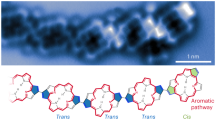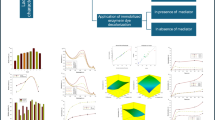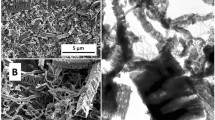Abstract
Ekeley and Ronzio1 have described a series of coloured compounds which are obtained when aromatic amidines are heated with glyoxal in alkaline solution. The reaction is complex, and the results are uncertain and dependent on the conditions employed. By heating with a very small amount of glyoxal at pH 9 in the presence of a borate buffer, the reaction is made much more sensitive and reliable, and is suitable for the quantitative estimation of amidines down to 1 in 100,0002. The buffer is made up from 4 gm. of boric acid neutralized in hot solution with caustic soda to pH 9, and diluted to 100 ml. The glyoxal reagent is a 0·5 per cent aqueous solution of glyoxal sodium bisulphite
This is a preview of subscription content, access via your institution
Access options
Subscribe to this journal
Receive 51 print issues and online access
$199.00 per year
only $3.90 per issue
Buy this article
- Purchase on SpringerLink
- Instant access to full article PDF
Prices may be subject to local taxes which are calculated during checkout
Similar content being viewed by others
References
Ekeley, J. B., and Ronzio, A. R., J. Amer. Chem. Soc., 57, 1353 (1935).
Evans, D. G., Fuller, A. T., and Walker, J., Lancet, ii, 523 (1944).
Devine, J., Ann. Trop. Med. and Parasitol., 38, 35 (1944).
Author information
Authors and Affiliations
Rights and permissions
About this article
Cite this article
FULLER, A. A Colour Reaction for Aromatic Amidines. Nature 154, 773 (1944). https://doi.org/10.1038/154773a0
Issue date:
DOI: https://doi.org/10.1038/154773a0
This article is cited by
-
In situ analysis and imaging of aromatic amidine at varying ligand densities in solid phase
Analytical and Bioanalytical Chemistry (2019)
-
Researches on indazole derivatives
Chemistry of Heterocyclic Compounds (1966)
-
Researches on indazole derivatives
Chemistry of Heterocyclic Compounds (1966)



